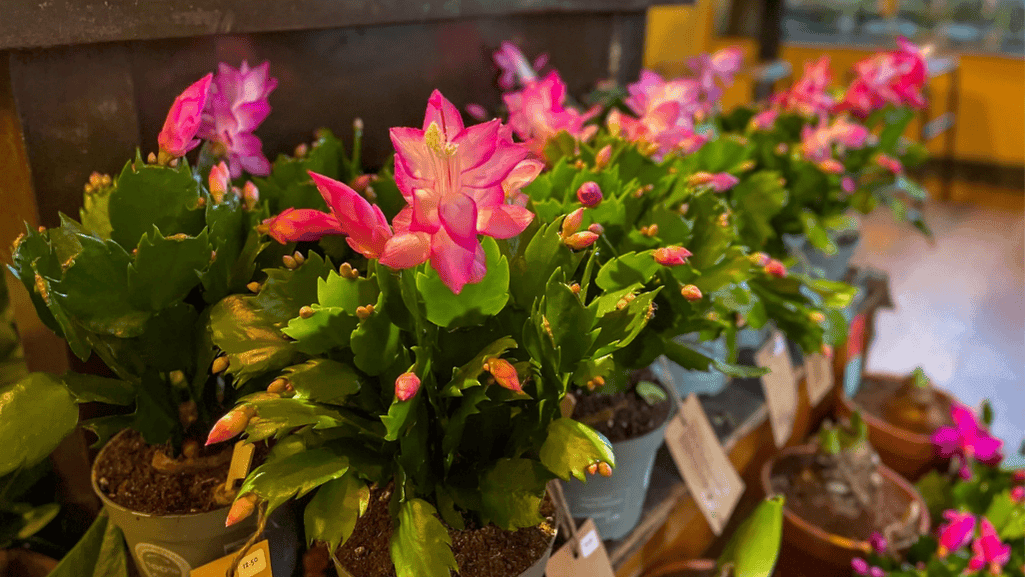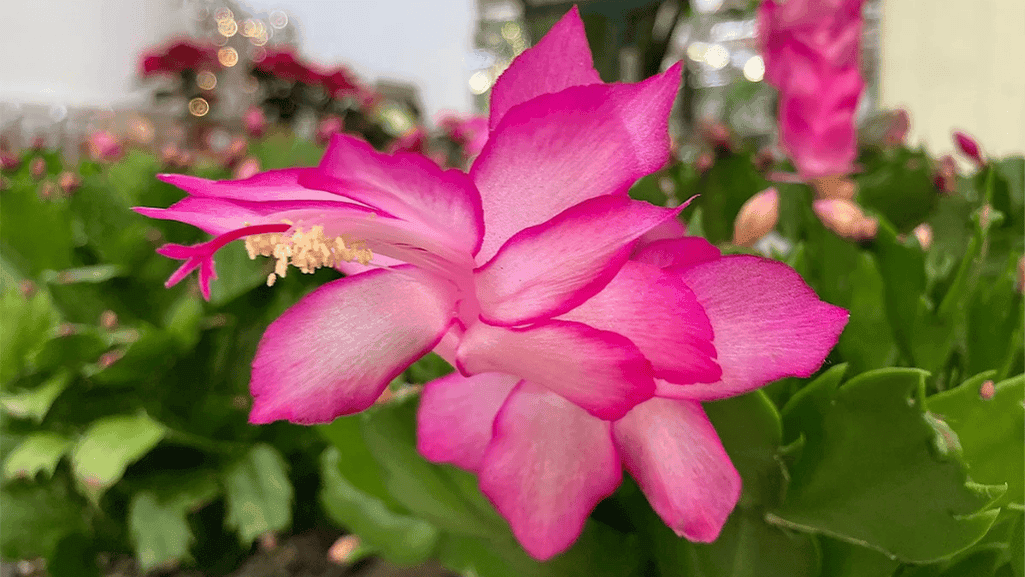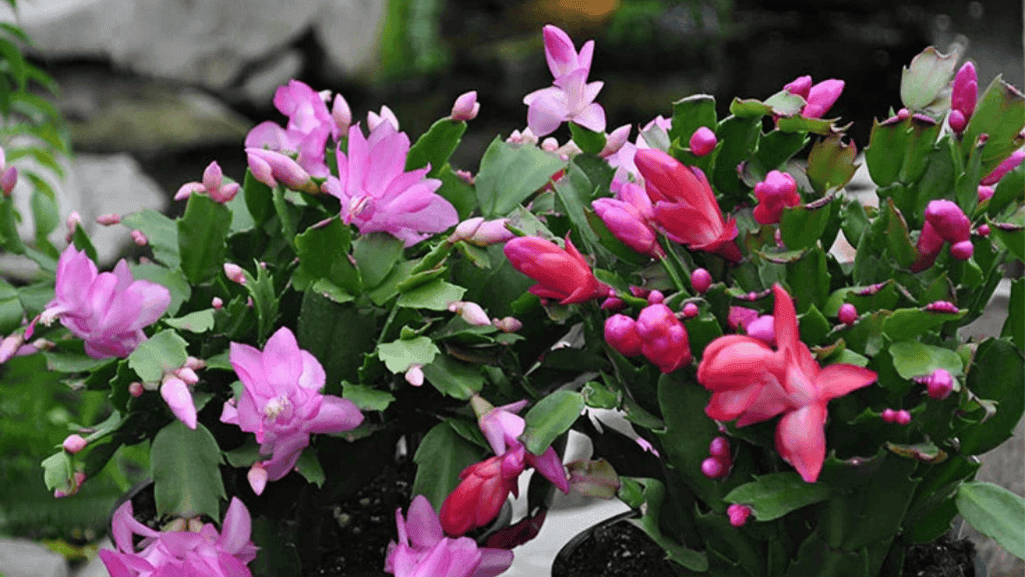
Beautiful flowers gardenia Plants For Your homes

Want your Christmas cactus to bloom beautifully during the winter? This guide covers everything you need to know, from light and watering needs to solving common issues.
Christmas cacti thrive in humid environments with bright, indirect light, requiring careful moisture management to prevent overwatering.
Different types of holiday cacti, including Christmas, Thanksgiving, and Easter cacti, have unique blooming periods and care requirements.
Fertilization, proper pruning, and seasonal adjustments in light and temperature are crucial for encouraging blooms and maintaining a healthy Christmas cactus.

Christmas cacti are tropical succulents that bloom in early winter, bringing a splash of color to the colder months. Unlike the typical desert cactus, they don’t have thorny spikes but instead feature fleshy segmented stems that resemble flattened leaves. These plants can live for 20 to 30 years, creating a lush green cascade with their trailing stems.
What makes Christmas cacti even more special is their ability to bloom in late fall or early winter, producing flowers in a variety of colors including red, pink, and white. Even if a Christmas cactus stops blooming one year, it can still thrive and produce flowers in future years. Growing them as hanging plants can encourage the development of more stems, enhancing their overall appearance.
Knowing the different types of holiday cacti helps in providing the right care. Each type has distinct characteristics and blooming periods that influence their care year-round.
There are three primary types of holiday cacti. These include the Christmas cactus (Schlumbergera x buckleyi), the Thanksgiving cactus, and the Easter cactus. Each type has distinct blooming periods and leaf shapes, which can sometimes lead to mislabeling in garden centers. The holiday cactus is often confused with these other varieties.
The Christmas cactus typically blooms in late fall to early winter, aligning perfectly with the holiday season. The Thanksgiving cactus, as its name suggests, blooms around Thanksgiving, while the Easter cactus blooms in the spring. Understanding these differences can help ensure you provide the right care at the right time for each type.

Christmas cacti thrive in environments that mimic their natural humid habitats. Unlike typical desert cacti, they prefer a humid environment and require careful moisture management to ensure healthy growth.
Proper light, temperature, and humidity are vital for their well-being.
Christmas cacti thrive in bright, indirect light. Place your plant within three feet of an east or west-facing window, using sheer curtains for shading.
Ideally, they should receive 4-6 hours of bright, indirect light daily, especially during the winter months.
During the growing season, temperatures between 70°F and 80°F are ideal. Cooler temperatures around 50°F to 55°F in early fall can stimulate blooming.
To boost humidity, use a humidifier or a pebble tray with water, replicating the plant’s native tropical rainforests conditions.
Christmas cacti prefer to flourish in conditions similar to their native habitats, such as mossy trees and rocky areas. They dislike wet soil, so selecting the right potting mix and pot is crucial for healthy growth.
Consider repotting when the roots outgrow their current pot.
For Christmas cacti, the ideal potting mix is a sandy cactus mix. Alternatively, you can use general-purpose potting soil combined with perlite. This ensures optimal drainage, which is essential to prevent root rot.
Checking the roots for rot regularly can help prevent further damage if detected early.
Terracotta or clay pots are the best choice for Christmas cacti, as they allow for better air exchange and moisture control. Ensure the pot has many drainage holes or one large one to provide proper drainage.
When repotting, use a pot that is only slightly larger—about 1-2 inches in diameter.

Proper watering is vital, as overwatering can harm your Christmas cactus. Adjust watering frequency according to seasonal changes for optimal health.
Water only when the soil is completely dry. Puckering leaves indicate dryness, and shriveling may follow.
During winter, reduce watering to support their dormancy and prevent bud drop during the blooming phase.
Do not over-water or under-water; water a little at a time, ensuring the soil is adequately dry before watering.
A moisture meter can help determine when the soil is ready for the next watering.
Proper fertilization encourages better blooms. Removing spent flowers helps the plant focus energy on new growth and increases flowering.
Feed your Christmas cactus monthly with diluted fertilizer in spring and summer, stopping when buds form. During the growing season, use half-strength fertilizer from spring through August.
Monthly applications of Epsom salts provide essential magnesium but should not be mixed with fertilizer in the same week.

Providing the right conditions and care encourages blooming. Regularly removing faded flowers promotes stronger growth and enhances the bloom display.
To promote blooming, provide a cooler environment of 50°F to 55°F for 6-8 weeks in the fall. Longer nights and cooler temperatures in early fall are essential to trigger blooms.
In fall and winter, reduce watering to prevent root rot and encourage flower bud formation.
Pruning encourages tree branches and more stems, leading to more blooms. Prune right after blooming or during new growth, using a sharp, sterilized knife or scissors.
Propagating Christmas cacti is rewarding. The best method is stem cuttings, which can be rooted in water before planting in soil.
When taking cuttings, use sections that contain one to four jointed segments called cladodes. Allow the stems to dry in a ventilated area for two to three days to help prevent rot.
Plant cuttings in a well-draining medium like sand or perlite, keeping them moist but not overly wet.
Common problems with Christmas cacti can include yellowing leaves, leaf spotting, and wilting, which may indicate a virus.
Maintaining ideal temperatures and conditions can prevent these issues and promote lush flowering during the holidays.
Christmas cacti can be affected by several common pests. These include fungus gnats, flower thrips, aphids, spider mites, and mealybugs. Mealybugs leave behind a sticky honeydew substance that can affect the plant.
For thrip infestations, use insecticidal soap or horticultural oil.
Before: Overwatering is the main cause of fungal diseases in Christmas cacti. Signs of root rot include wilting and brown leaves. Additionally, you may notice black or reddish spots on the leaves and stems, along with soggy soil.
After: Overwatering is the main cause of fungal diseases in Christmas cacti. Signs of root rot include:
wilting
brown leaves
black or reddish spots on the leaves and stems
soggy soil
Good air circulation and avoiding overwatering help prevent diseases.

Seasonal care is crucial for the year-round health of Christmas cacti.
After blooming, resume fertilization in late winter or early spring and prune to facilitate new growth.
After blooming, reduce watering and let the top soil dry out. In winter, keep the plant in a cooler environment around 50-55°F to promote dormancy and encourage bud development.
In summer, provide bright, indirect sunlight to support growth and blooming. Maintain high humidity by misting the plant or using humidity trays.
Repotting and overwintering are vital for the long-term health of Christmas cacti. Repot every 3-4 years to prevent moisture issues, using a pot only slightly larger than the current one to avoid overwatering and root rot.
When repotting, select a pot that is 1-2 inches larger in diameter and ensure it has proper drainage holes.
Repot after blooming to maintain optimal health.
For successful overwintering, bring your Christmas cactus indoors before freezing temperatures and keep the soil drier during winter to support new bud development.
Caring for a Christmas cactus involves understanding its unique needs and providing the right conditions for it to thrive. From proper light and temperature to the perfect potting mix and watering schedule, each step contributes to the overall health and blooming of the plant. Regular fertilizing, pruning, and seasonal care are essential to encourage vibrant blooms and long-term growth.
By following these tips, you can enjoy the beauty and joy of a blooming Christmas cactus during the holiday season and beyond. Remember, each plant is unique, so adjustments may be needed based on its specific needs and environment. With patience and care, your Christmas cactus will reward you with stunning flowers and lush green stems for many years to come.
You should water your Christmas cactus only when the soil has completely dried out, ensuring you check the moisture level first to prevent overwatering. This approach promotes healthy growth and reduces the risk of root rot.
Christmas cacti thrive in bright indirect light, so placing them near a large east or west-facing window with sheer curtains for shading is ideal. This will help them flourish while protecting them from harsh sunlight.
To encourage your Christmas cactus to bloom, maintain cooler temperatures between 50°F to 55°F and ensure longer nights starting in early fall. Additionally, reduce watering during the fall and winter months to promote flower bud formation.
To effectively address mealybugs on your Christmas cactus, treat the affected areas with insecticidal soap or horticultural oil. Regularly inspect your plant and promptly remove any pests to prevent future infestations.
The best time to repot your Christmas cactus is every 3-4 years after it has finished blooming. This helps prevent moisture issues and promotes healthy growth.




